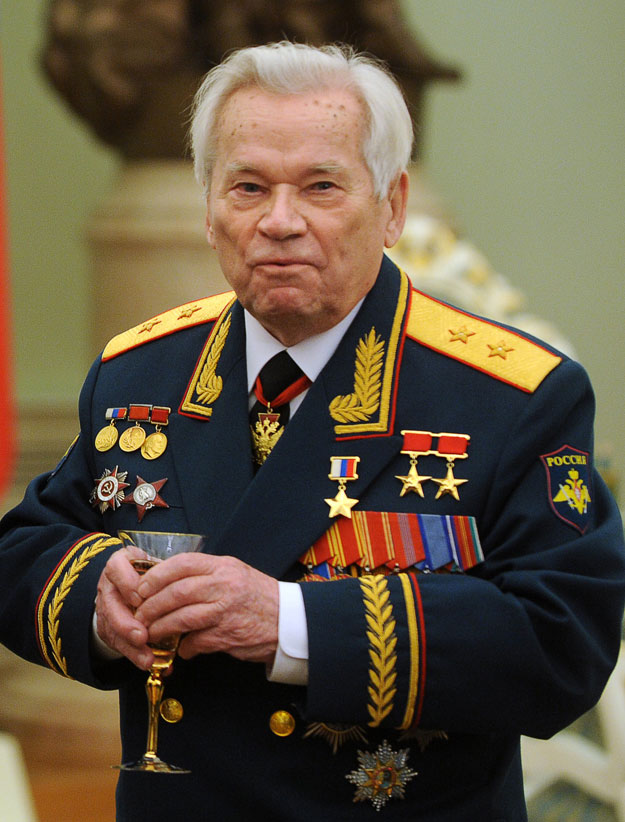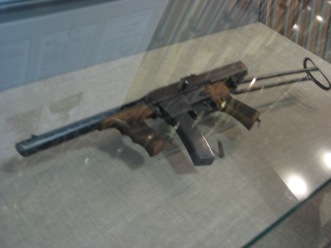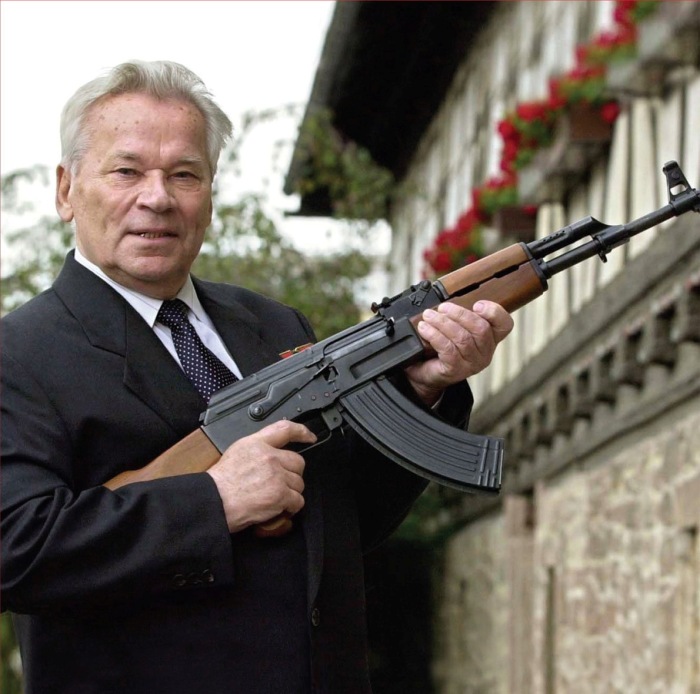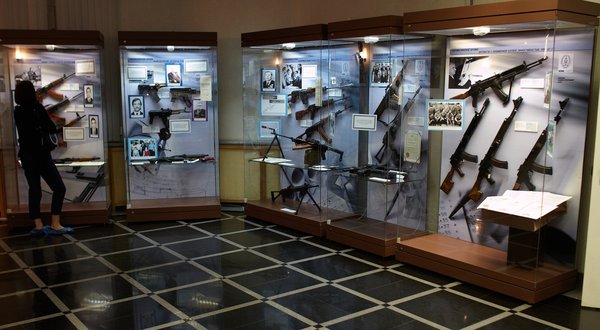Mikhail Kalashnikov, designer of the fabled AK-47 automatic rifle which became a weapon of choice for guerrillas and governments the world over, died on Monday at age 94.

Mikhail Kalashnikov, the Soviet general who designed the ubiquitous automatic weapon that now bears his name, died on Dec. 23 at the age of 94. Iterations of the gun he invented now exist in the tens of millions, making it the most popular rifle in the wars of the latter half of the 20th century.

A former Soviet tank gunner of humble Siberian origins, Kalashnikov submitted his prototype as part of a competition held to design a new Soviet infantry rifle in the waning moments of World War II. The AK-47 was born: a lightweight automated gun that was both easy to use and maintain. As C.J. Chivers — the New York Times journalist and author of a book on the history of the AK-47 — writes, Soviet infantry first wielded these rifles during the brutal crackdown on the Hungarian uprising in 1956. It was “repression’s chosen weapon, the rifle of the occupier and police state,” writes Chivers. But it was also the chief instrument of a new generation of global conflict.
Use of the weapon first spread along ideological lines, proliferating among armies and militias that had common cause with the Soviet Union. It sprung up in Vietnam in the 1960s and made its way to insurgencies in Africa and Latin America. The flag of Mozambique — an ensign adopted after the successful struggle of leftist guerrillas against Portuguese colonial rule — still features an AK-47 armed with a bayonet.

Kalashnikov said he never intended for it to become the preferred weapon in conflicts around the world.
“I created a weapon to defend the fatherland’s borders. It’s not my fault that it was sometimes used where it shouldn’t have been. This is the fault of politicians,” he said during an award ceremony at the Kremlin to mark his 90th birthday.
AK-47’s name stands for “Kalashnikov’s Automatic” and the year its final version was designed, 1947. Also called the “Kalashnikov”, the rifle and its variants are the weapons of choice for dozens of armies and guerrilla groups around the world.
Subsequent models and versions of the gun mushroomed elsewhere. It became synonymous with the activities of militant groups. In the 1980s, mujahedin brandishing Kalashnikovs clashed with the Soviet army occupying Afghanistan and, to this day, the culture that spawns the Taliban’s foot soldiers is branded with a telling alliteration: the Koran and the Kalashnikov.
Kalashnikov, the man himself, remained through his life a figure of Soviet and later Russian nationalism. He still professed loyalty to Lenin and Stalin, despite losing family members to Siberian prisons. He also claimed the creation of his weapon was not for offensive purposes, but the “defense of the motherland” — no matter that there’s now virtually no place on earth not in range of a Kalashnikov’s muzzle.

Kalashnikov, though he designed a weapon that became synonymous with killing on a sometimes-indiscriminate scale, was seen in the Soviet Union as a national hero and symbol of Moscow’s proud military past.
He died in Izhevsk, an industrial town 1,300 kilometres (800 miles) east of Moscow, Viktor Chulkov, spokesman for Udmurtia’s leader Alexander Volkov.
Russian President Vladimir Putin has expressed his “deepest condolences” to the family of the “outstanding” designer, the Kremlin said.
“One of the brightest, most talented and consistent patriots of Russia who dedicated all his life to serving his homeland has passed away,” Volkov said in a condolence message quoted by his spokesman.
The spokesman, Chulkov, said a state commission would convene on Tuesday to plan a funeral for Kalashnikov, whom he described as a man of “state” stature.
More than 100 million Kalashnikov rifles have been sold worldwide and fighters in such far-flung conflict zones as Iraq, Afghanistan and Somalia wield them.
A bayoneted version of the AK-47 rifle features on Mozambique’s national flag.

Igor Korotchenko, head of the Centre for Analysis of World Arms Trade, called Kalashnikov an “outstanding Russian gunmaker, a man of natural gifts of the kind who are born just once in 100 years.”
“The fact that he was born in Russia shows the intellectual potential of our country,” he told AFP.
Kalashnikov was showered with every possible major prize in the Soviet Union — Hero of Socialist Labour and winner of the Lenin and Stalin prizes. Modern Russia in 2009 gave him its highest honour — Hero of Russia.
Wounded during the bloody battle with Nazi forces at Bryansk in 1941, Kalashnikov was given six months’ leave during which he thought up the first versions of his soon to be legendary rifle.
His superiors saw his talent, encouraged his work, and in 1945 entered a sample of the rifle into a competition. In 1947, the design was recommended for use in the Soviet army.
A year later, Kalashnikov was sent to the weapons factory Izmash in Izhevsk — a plant known since imperial times — to work on production of the rifle.
It quickly became prized for its sturdy reliability in difficult field conditions. The 205-year-old Izmash plant remains one of the main producers of Russian weapons and is treasured as a national icon.
Yet the design was never patented internationally and Izmash always complained that its potential income from the weapon was hit badly by the “pirated” versions of the designs made abroad.
Kalashnikov barely profited financially from his exploits and lived modestly in Izhevsk, a city in the Ural mountains of around 630,000.
The Izmash factory fell on hard times after a collapse in orders following the fall of the USSR, a fact that prompted Kalashnikov to make a personal appeal to Putin.
That appeal bore fruit and in August this year the Izmash Company was revamped and renamed the Kalashnikov Company in the hope his name would bring the factory more orders.
Kalashnikov’s wife Yekaterina died in 1977. They had four children, three of whom survive and all of whom work on projects linked to their father’s life.